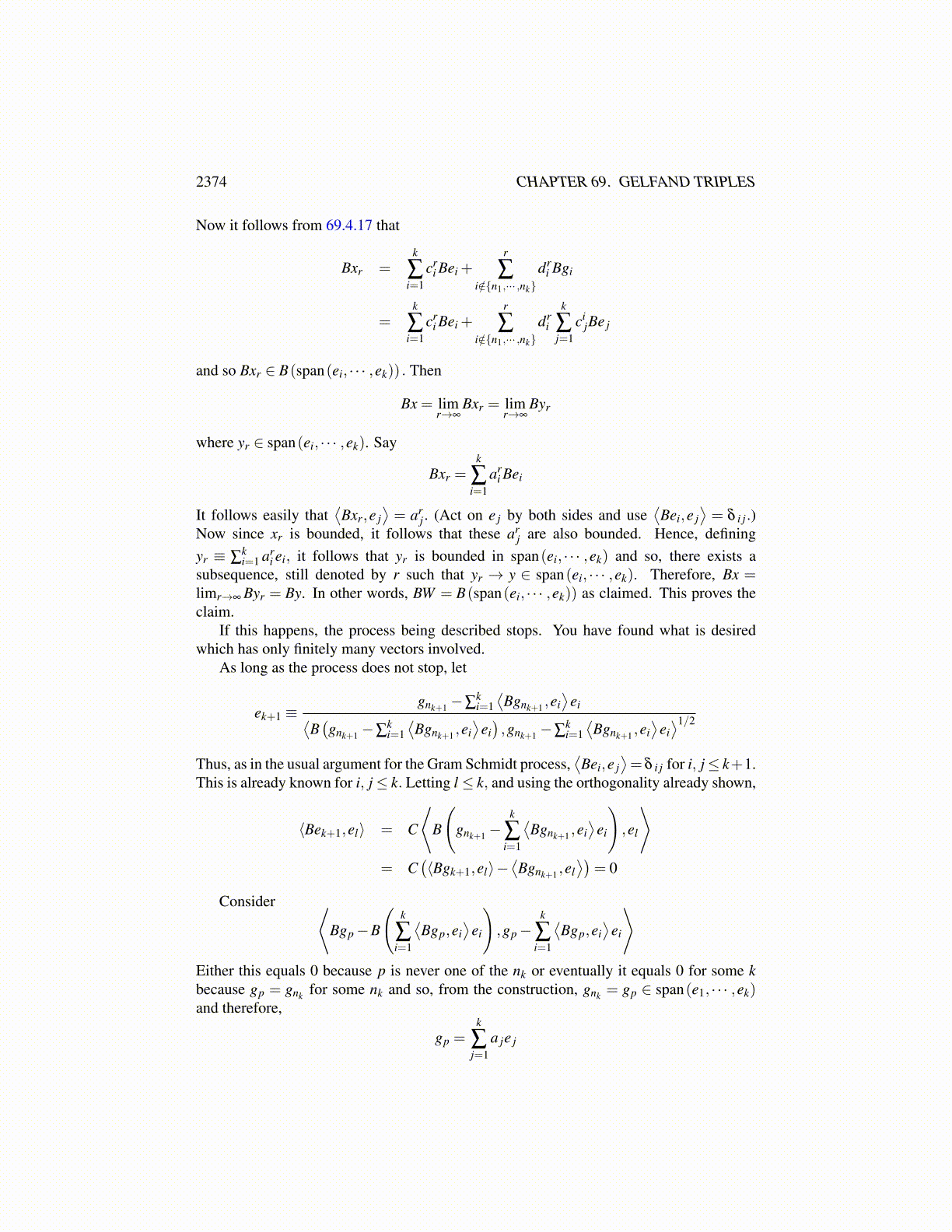
2374 CHAPTER 69. GELFAND TRIPLES
69.4 The Implicit CaseThe above theorem can be generalized to the case where the formula is of the form
BX (t) = BX0 +∫ t
0Y (s)ds
This involves an operator B ∈L (W,W ′) and B satisfies
⟨Bx,x⟩ ≥ 0, ⟨Bx,y⟩= ⟨By,x⟩
forV ⊆W,W ′ ⊆V ′
Where V is dense in the Hilbert space W . Before giving the theorem, here is a technicallemma.
Lemma 69.4.1 Suppose V,W are separable Banach spaces, W also a Hilbert space suchthat V is dense in W and B ∈L (W,W ′) satisfies
⟨Bx,x⟩ ≥ 0, ⟨Bx,y⟩= ⟨By,x⟩ ,B ̸= 0.
Then there exists a countable set {ei} of vectors in V such that⟨Bei,e j
⟩= δ i j
and for each x ∈W,
⟨Bx,x⟩=∞
∑i=1|⟨Bx,ei⟩|2 ,
and also
Bx =∞
∑i=1⟨Bx,ei⟩Bei,
the series converging in W ′.
Proof: Let {gk}∞
k=1 be linearly independent vectors of V whose span is dense in V .This is possible because V is separable. Thus, their span is also dense in W . Let n1 be thefirst index such that ⟨Bgn1 ,gn1⟩ ̸= 0.
Claim: If there is no such index, then B = 0.Proof of claim: First note that if there is no such first index, then if x = ∑
ki=1 aigi
|⟨Bx,x⟩| =
∣∣∣∣∣∑i̸= jaia j
⟨Bgi,g j
⟩∣∣∣∣∣≤∑i ̸= j|ai|∣∣a j∣∣ ∣∣⟨Bgi,g j
⟩∣∣≤ ∑
i̸= j|ai|∣∣a j∣∣⟨Bgi,gi⟩1/2 ⟨Bg j,g j
⟩1/2= 0
Therefore, if x is given, you could take xk in the span of {g1, · · · ,gk} such that ∥xk− x∥W →0. Then
|⟨Bx,y⟩|= limk→∞
|⟨Bxk,y⟩| ≤ limk→∞
⟨Bxk,xk⟩1/2 ⟨By,y⟩1/2 = 0